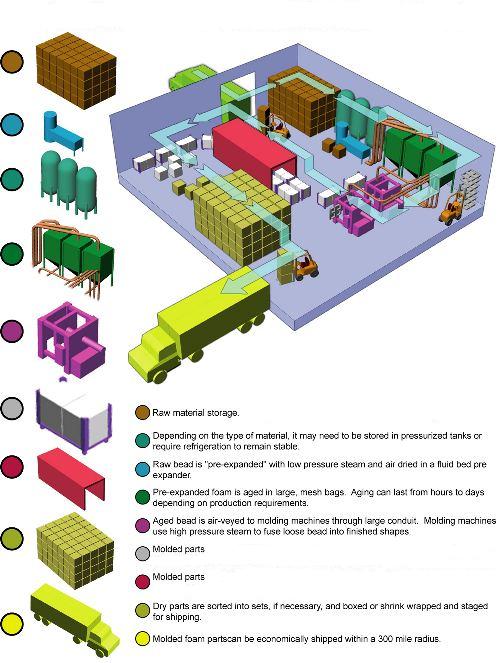Foam Fabricators Quality
Each of our manufacturing facilities are ISO 9001:2015 certified through NQA. Foam Fabricators has the experienced personnel and technology to excel in our customers’ highly sophisticated quality programs. Our engineering-driven design process can assist customer design efforts and our state-of-the-art production processes assure exceptional product quality.
Quality Policy Statement
Foam Fabricators designs and manufactures expandable foam products by means of control plans to promote customer satisfaction and using scorecards to drive improvement of shared goals.
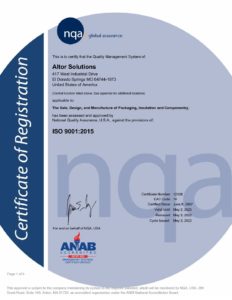

Foam Education
This area is here to help you to understand some of the basics pertaining to our industry.
Do you need assistance with a project?
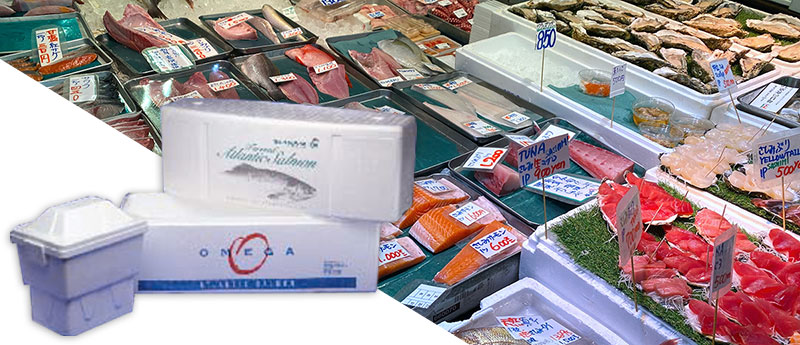
Raw Material Production
How our raw material is produced (one of the primary methods):
Crude oil is processed in a refinery, where it is separated into different components (fractions) to produce: gasoline, kerosene, diesel and lubricating oil. You then end up with naphtha and a residue that is used to make bitumen for surfacing roads. Most plastics are developed from naphtha. In total, less than 4% of all crude oil is used to make all plastics (from naphtha). Less than 1% is used to make EPS.
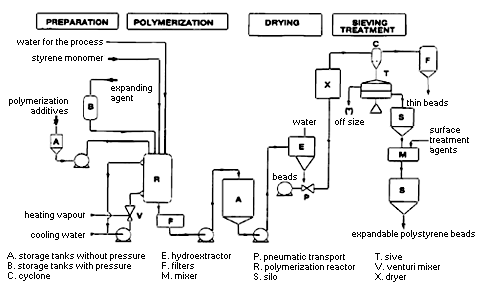
Polystyrene is extracted from oil during the refining process. Yes, that means EPS is an oil byproduct. Crude oil is not extracted or refined to produce EPS (or other plastics).
Thousands of small units of styrene, called monomers, link together to form large molecules of polystyrene by a process called polymerization.
Expanded polystyrene starts as small spherical beads with a typical diameter of 0.5-1.5mm. They contain an expanding agent; a pure hydrocarbon, which does not contain any CFC’s or halogens and does not damage the earth’s protective ozone layer
Raw Material Costs
The chart shows some primary examples of what drives eps costs up and down.
If you follow the red boxes you can see that EPS (and most of its derivatives) begin with either crude oil or natural gas. Because things like benzene, ethylbenzene and styrene (styrene monomer) are global commodities they are greatly influenced by supply and demand. For example, when gasoline (from crude oil) and heating (natural gas) market demands are both high, that can trigger upward trends in the ethylbenzene costs, which can lead to higher EPS prices. Obviously weak demand in the same markets can trigger deflation.
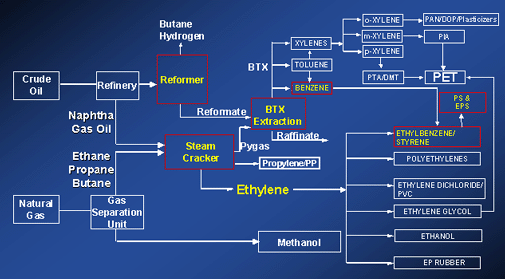
Raw Material Costs
The chart shows some primary examples of what drives eps costs up and down.
If you follow the red boxes you can see that EPS (and most of its derivatives) begin with either crude oil or natural gas. Because things like benzene, ethylbenzene and styrene (styrene monomer) are global commodities they are greatly influenced by supply and demand. For example, when gasoline (from crude oil) and heating (natural gas) market demands are both high, that can trigger upward trends in the ethylbenzene costs, which can lead to higher EPS prices. Obviously weak demand in the same markets can trigger deflation.
1. Beginning Production
Unlike other thermoplastic processes, the production of molded foam products requires that the raw materials be pre-expanded prior to the final molding process. The raw material (“expandable plastic” or “bead”) has a spherical shape and is similar to sugar in appearance.

- Pre-expansion
The tiny spherical beads are expanded to about 40 times their original size using a small quantity of pentane (typically 4% ~ 6% by weight) as a blowing agent. This process involves the heating of beads, using a flow of steam, which causes the blowing agent to boil and a honeycomb of closed cells is formed.

- Expanded Material Aging
As the material cools the pentane liquefies and a partial vacuum is formed inside the bead. The beads are returned to a holding bag for approximately twelve hours to allow the pressure differential to equalize, achieving a stabilized bead (material).
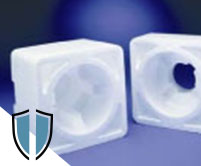
4. Molding
In this final stage the pre-expanded stabilized beads are reheated with steam in a mold. The final expansion takes place and the beads coalesce to produce a “shaped molding”. In this final form the molded foam is made up of 97% air.
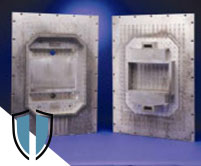
- The Machines and Tools
The molded foam is produced in aluminum tools. These are generally of male and female form, with the shape between the two halves of the mold creating a void where the “shape molded” part is being produced. The mold tool is fitted into a press, which has the facility to introduce steam from behind each half of the tool. The steam is introduced through small slotted vents, which have been machined into the mold tool when it was manufactured. Once material has been fused by the steam, water and/or vacuum are used to “cool” the tooling and thus once again stabilize the material (molded foam part).
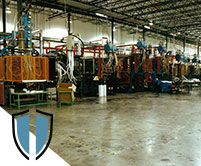
EPS (Molded Parts) 101
For a general and broad-based explanation of how molded eps parts work, what they can do and why EPS is used in so many different applications, just follow this link: “The ABC’s of EPS”
Tooling (Molds) 101
How molds are built:
There are a number of molded foam tooling construction techniques; what follows is one example.
A mold-maker will first design a typical multi-cavity aluminum mold with Computer Aided Design (CAD) software, using the customer supplied foam part CAD file or customer supplied geometric information. The negative shapes of the foam part are first fabricated as a foundry pattern. Foundry patterns may be made from wood or composite materials, using a range of manufacturing methods, from traditional pattern making techniques to Computer Numerical Control (CNC) machining processes. The foundry patterns represent the negative shape of the desired foam parts and are larger than the foam parts by a shrinkage factor for the aluminum foundry process and by a shrinkage factor for the molded foam plastic process.
Once the foundry patterns are inspected and verified, they are used to make multiple aluminum sand castings. The resulting male and female sand castings are then machined to accurately mount and fasten the castings to the moldplates. The castings are also drilled and vented so that there are “vents” evenly covering the surface of the casting. The venting is important for the molder to fill the cavities with foam beads and to expand the foam beads with steam during the foam molding process.
Other necessary machining operations to the cavities provide locations for fill guns, ejectors, and support posts. The completed and inspected casting sets, or cavities, are then mounted to the mold plates with stainless steel fasteners. Support posts, ejectors, the cooling manifold, and the custom fill plate are produced concurrently with the cavities and available for the final mold assembly. After the final mold assembly the mold is inspected to insure it is in proper alignment and will produce dimensionally acceptable parts. The mold is then crated and shipped to the molder.
Here you can see all the pieces that comprise a tool.
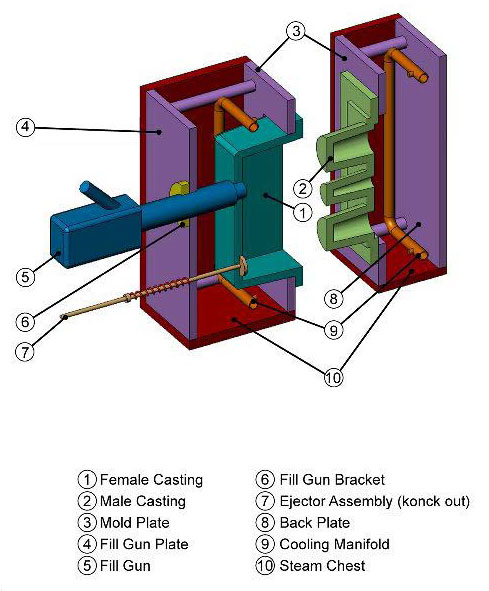
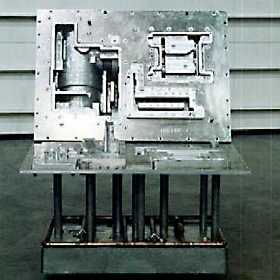
Plant Tour
Take a virtual plant tour with us:
This is a representation of a molded foam plant with all the options! Some of our plants that specialize in molded EPS may not have drying tunnels and/or pressurization tanks. Plant layouts and material flow can differ from location to location.
This picture below is one of our actual plants.

